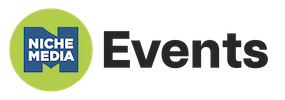
Publishers have gotten the message that they need to innovate to survive. Innovation can take several forms – new content areas, new products, new business models. As digital ad dollars grow scarcer, some publishers have turned to the idea of micropayments to monetize their web and mobile content.
By micropayments, I mean charging just a few cents to view each piece of content. For example, Blendle, a “Spotify, a Netflix, an iTunes for journalism” created a platform that allows publishers to sell each piece of content for 9 to 49 cents.
I like seeing new ideas in the marketplace, but I urge publishers to consider the pros and cons of micropayments versus subscriptions before diving in.
The Arguments for Subscriptions
- Consumers prefer the subscription model
According to a research study on consumer attitudes toward paying for digital content, respondents were strongly in favor of a subscription model that gave access to a broad range of content over a pay per piece model. Of those who expressed a business model preference, 83% preferred a subscription model.
- You don’t require the customer to think every time they want to read something
Inertia is part of the subscription model. In The Paradox of Choice, Barry Swartz talks about the emotional toll of being overwhelmed with too much choice. He warns to “beware of excessive choice: choice overload can make you question the decisions you make before you even make them.” A micropayments model requires the customer to think before they click, every day, every time.
- Year over year growth is easier with subscriptions
Those of you in product sales know that to show growth, you have to repeat what you did last year, and then sell even more! On the other hand, if you have a subscription plan with a 70% renewal rate, you only have to find 31% as many new customers next year to show growth.
The Arguments for Micropayments
- Small hurdle
Small price tags make it easy for the reader to say yes. You’re not asking for a long term commitment. You’re just asking for a few cents.
- The training wheels argument
In making small purchases, readers are learning how to pay for digital content. In time, you could raise prices or introduce high-priced premium subscription packages. You could argue that iTunes helped people learn how to pay for music, thus setting the stage for services such as Spotify.
- There is virtually no cap on earnings
A subscription price is fixed no matter how much content the reader consumes. The micropayments model puts no ceiling on how much a given reader could pay. Think about the mobile gaming world, in which the most enthusiastic gamers pay over $68 per month on tiny purchases within free-to-download games.
Best of Both Monetization Models
My experience has shown the subscription model usually has a long term advantage over the pay per piece model. However, you can try to do both! Why not try a low-price subscription for credits model, like Audible does. If you subscribe to Audible, you get 1 or 2 credits per month (depending on your plan), which can be redeemed for audiobooks. This way, you lock in the recurring revenue while offering an affordable price point to get the customer to make that first payment.
At the very least you should test both models with your audience to see what they prefer and how the economics work.
I’d love to hear from you – what micropayments models have you had success with? Please send me an email or comment below.
Editor’s note: Want to learn more from Rob? He’ll be speaking at the Niche Digital Conference September 19-21.
**********
Rob Ristagno is the CEO and Founder of The Sterling Woods Group, a firm that builds new revenue streams for media companies and publishers. He is an expert in direct monetization of content. Prior to creating The Sterling Woods Group, Rob served as a senior executive for several niche media and e-commerce companies. He most recently was the Chief Operating Officer of America’s Test Kitchen, considered to be the gold standard in the niche media world for building diversified – and often digital – revenue streams.
is the CEO and Founder of The Sterling Woods Group, a firm that builds new revenue streams for media companies and publishers. He is an expert in direct monetization of content. Prior to creating The Sterling Woods Group, Rob served as a senior executive for several niche media and e-commerce companies. He most recently was the Chief Operating Officer of America’s Test Kitchen, considered to be the gold standard in the niche media world for building diversified – and often digital – revenue streams.
*************
Niche Media has created super niched-out events specifically for magazine publishers for over 12 years. Next up? The Niche Digital Conference in Denver, Sept. 19-21. We’ve helped pave the way for the era of boutique events that connect specific audiences and provide great educational, friendly and super-fun environments! Plus, Carl Landau – Niche Media’s Grand Poobah – is launching the all new Super Niche Event, March 27-29, 2017. Check it out!
– Web: NicheMediaHQ.com
– Blog: Niche Media HQ
– Twitter: @NicheMediaHQ
– Facebook: NicheMediaHQ
– LinkedIn: Niche Media Inc & Niche Media Network
– YouTube: NicheMediaHQ
– Google+: +NicheMediaHQ
Image from freedigitalphotos.net




